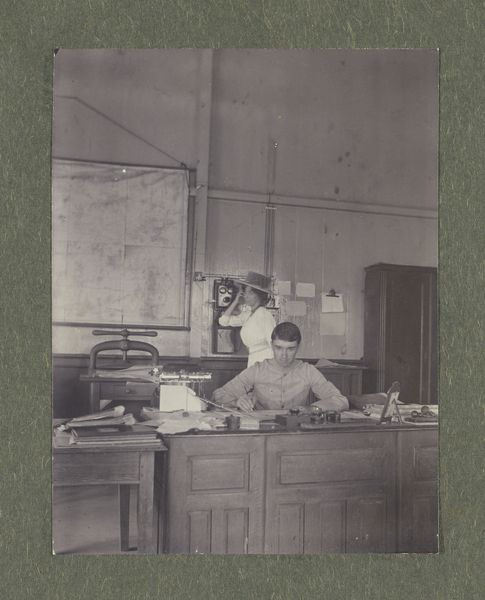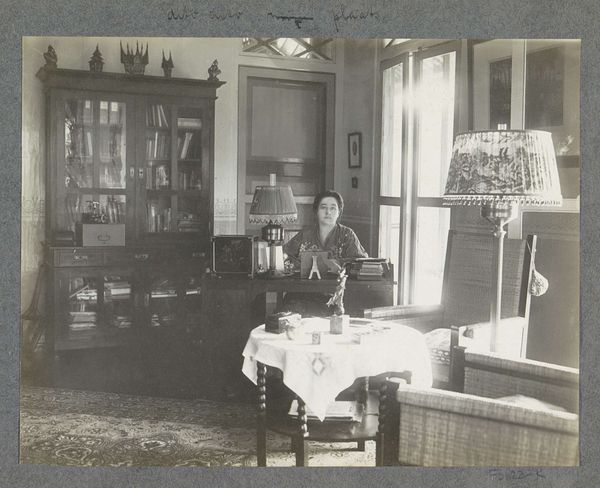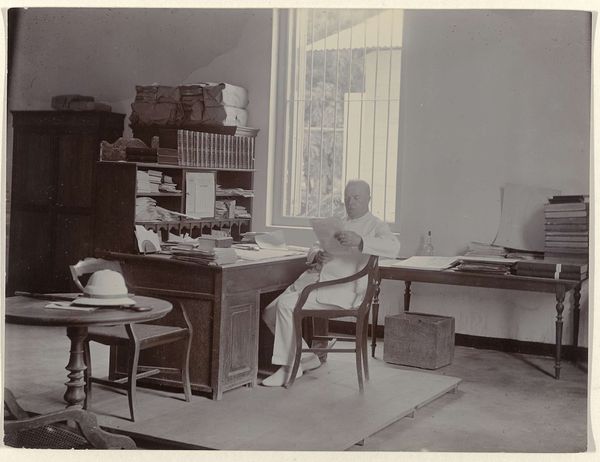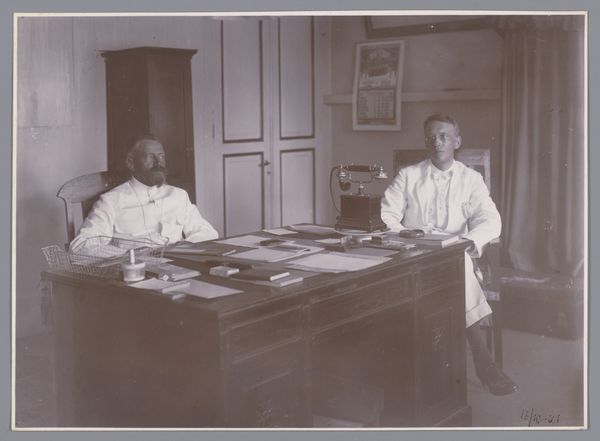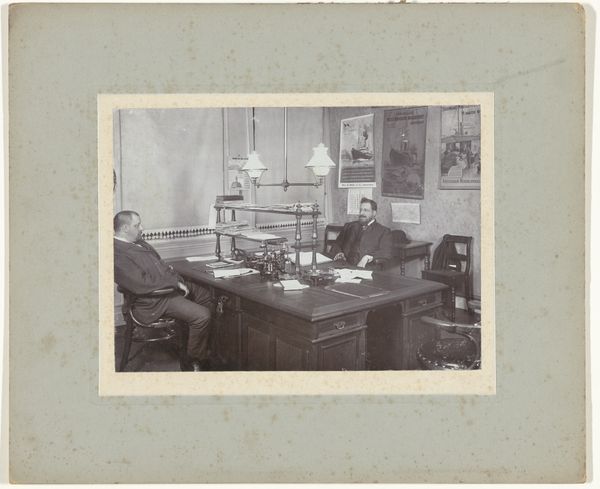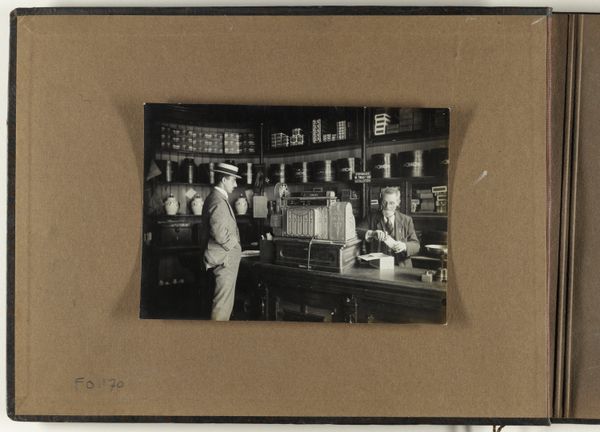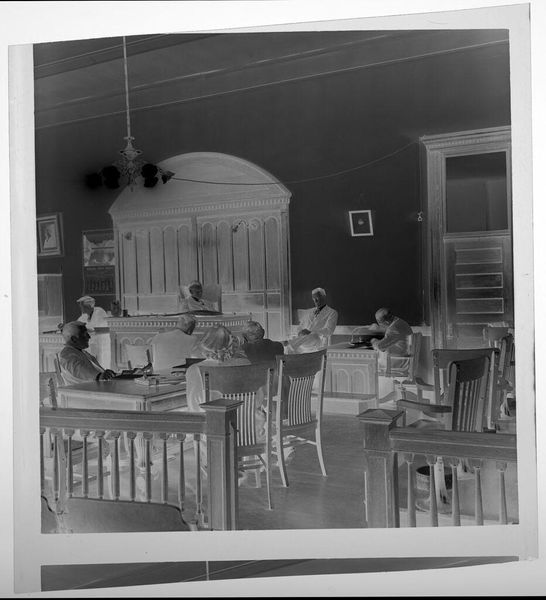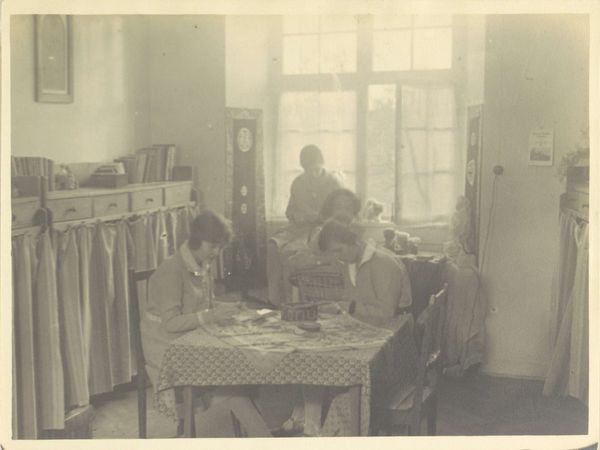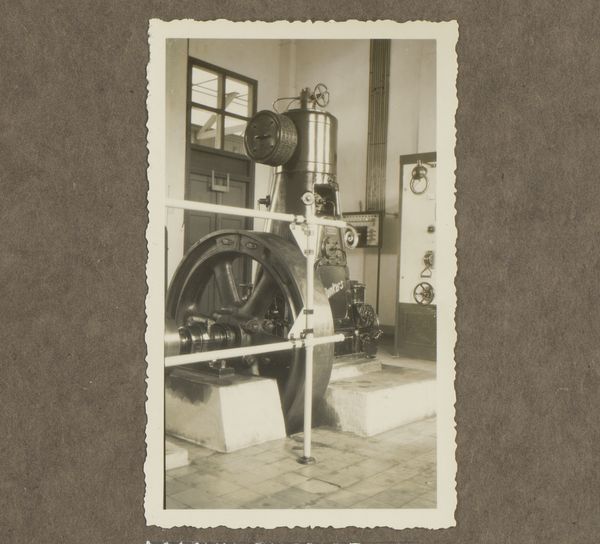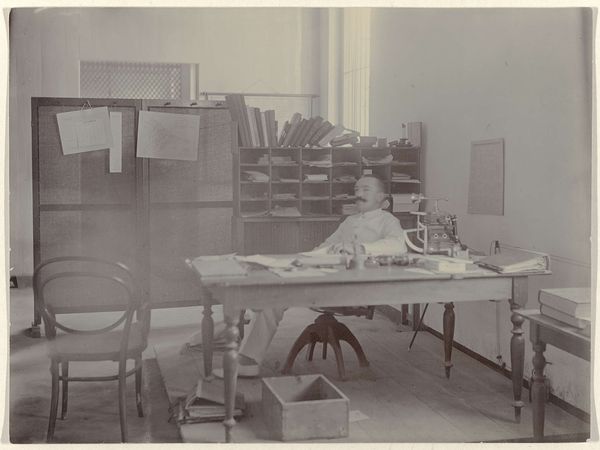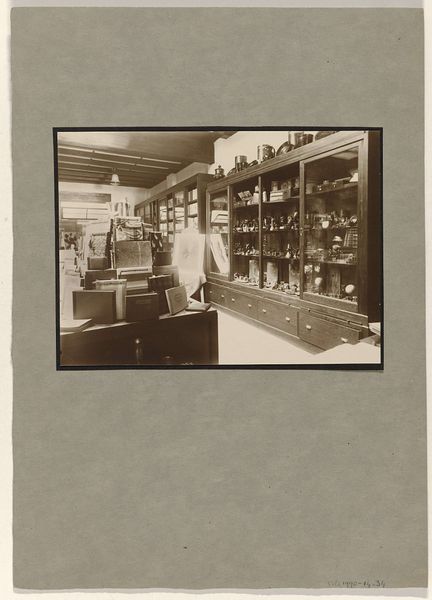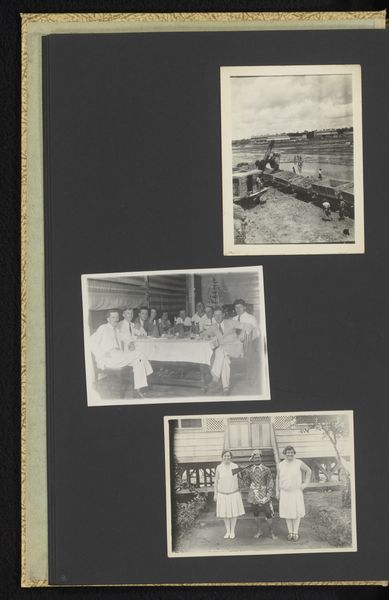
photography
#
portrait
#
pictorialism
#
photography
#
genre-painting
#
modernism
Dimensions: height 113 mm, width 86 mm
Copyright: Rijks Museum: Open Domain
Curator: Here we have an early 20th-century photograph, probably taken between 1909 and 1910, titled "Kantoor op Marienburg." It’s currently part of the Rijksmuseum collection. Editor: It's so stark. A muted gray scale pervades, softening the forms almost as if blurring them slightly. Everything feels practical and utilitarian, right down to the women themselves. Curator: Yes, pictorialism as a style would explain that. Pictorialism used soft focus and printing techniques to create effects that mimicked painting and etching, elevating photography to the status of fine art and allowing the focus of these scenes of genre-painting to lean heavily into aesthetics and sentimentality. Editor: Definitely, but the office machinery and objects strewn across the desk are just as essential to conveying mood. Look closely at the telegraph equipment affixed to the wall and the rudimentary, cast-iron paper press clamped to the desk! Their presence highlights the changing methods of office labor and speaks volumes. Curator: It speaks even more, perhaps, about the changing role of women within the workplace during the modernist movement. As their presence within commerce began to flourish, the imagery became widely exploited to advance advertising campaigns that equated new notions of emancipation with economic shifts and technological advancements. Editor: Precisely. Their white shirtwaists aren’t simply demure and business appropriate. Rather, the adoption of similar articles of clothing could symbolize solidarity and social-class solidarity, hinting at nascent labor organization movements within women’s working environments. It may also draw a parallel between garment production as domestic handiwork that translates here to the efficient operations within modern industry. Curator: All quite subversive, if indeed the artist was trying to imbue those notions through careful visual cues. Ultimately, without explicit affirmation or testimony from the author of the work itself, all interpretations are based on educated speculation. Editor: Still, a potent reminder of photography's power to document shifting cultural landscapes as technological advances further blurred established demarcations of labor and leisure during an era of tremendous societal transition!
Comments
No comments
Be the first to comment and join the conversation on the ultimate creative platform.
